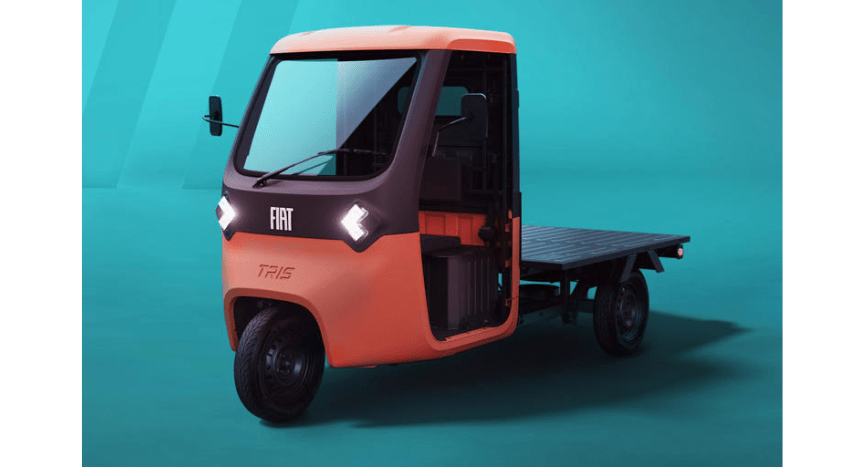In the shifting landscape of last-mile logistics, a new concept vehicle is turning heads for its innovative design and potential to redefine urban delivery. The Fiat TRIS—a compact, electric vehicle still in the conceptual phase—promises a practical, cost-effective solution for dense city environments. As Rob Enderle notes in his original piece, the TRIS could also serve as a critical link between ground-based delivery and future drone integration.
Enderle, writing from Oregon, reflects on the local tension between “supporting local businesses and the convenience of rapid delivery,” positioning the TRIS as a solution tailor-made for this balance. “More than just a tiny truck,” he writes, “the TRIS could be an ingenious bridge towards a future dominated by drone delivery, offering a practical and cost-effective solution for the immediate challenges of getting goods from local hubs to our doorsteps.”
A Purpose-Built Solution for Urban Streets
Smaller and more agile than traditional delivery vans, the Fiat TRIS is designed with congested cities in mind. Powered entirely by electricity, the vehicle emphasizes low operating costs and maximized cargo efficiency—ideal for navigating tight streets and securing limited parking spots. Enderle explains: “Imagine a fleet of these zippy little EVs navigating crowded avenues, slipping through traffic that would stymie larger vans, and efficiently dropping off everything from takeout from your favorite local eatery to that last-minute online purchase.”
For delivery services like DoorDash, Uber Eats, and local couriers, the vehicle’s lower price point and electric agility could offer a competitive edge. “The affordability of the Fiat TRIS is a key selling point,” Enderle writes, “particularly for delivery services operating on tight margins.”
A Launchpad for Drone Delivery?
What sets the TRIS apart is its potential to serve more than just ground-based deliveries. Enderle proposes a future use case in which the TRIS acts as a mobile micro-hub for drones. “Drones, with their limited range and payload capacity, could utilize the TRIS as a localized launch and landing platform, significantly extending their operational reach and efficiency,” he writes. Instead of flying from distant warehouses, drones could make short, frequent trips between nearby TRIS units and customers, creating a faster and more energy-efficient delivery chain.
In this vision, the TRIS becomes a key player in a hybrid logistics network, integrating compact electric vehicles and aerial delivery to improve both reach and speed.
Fiat’s Bold Move Toward New Markets
While the market for ultra-compact, electric delivery vehicles is still taking shape, Fiat’s willingness to lead in this space stands out. Enderle praises the company’s approach: “Fiat deserves considerable praise for venturing into this relatively nascent category of ultra-compact, purpose-built electric delivery vehicles.” The TRIS isn’t just a smaller EV—it represents a shift in thinking about how cities can manage the demands of modern delivery.
By focusing on efficiency, affordability, and adaptability, Fiat is positioning the TRIS as a forward-looking solution for a fast-changing industry.
A Small Vehicle with Global Implications
As Enderle sums it up: “While the skies above our cities may eventually hum with the drone fleets of tomorrow, the Fiat TRIS offers a tangible, ground-level solution for the challenges of today’s last-mile delivery.” He adds, “Fiat, with the TRIS, might just be paving the way for the future, one tiny, electric mile at a time.”
The Fiat TRIS may still be in the conceptual phase, but its implications for last-mile delivery—especially in cities like Bend and beyond—could be significant. Compact, affordable, and potentially drone-integrated, this tiny EV could help reshape how goods move across the final stretch from hub to home.
Source: Torque News
Image Source: Fiat Tris








